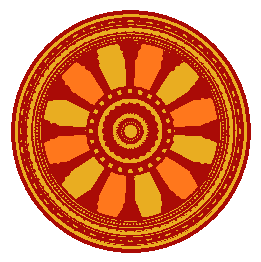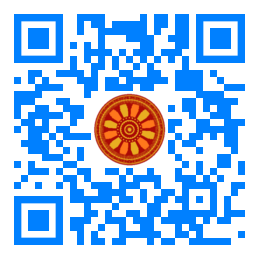
:: International Transaction Journal of Engineering, Management, & Applied Sciences & Technologies
http://TuEngr.com

ISSN 2228-9860
eISSN 1906-9642
CODEN: ITJEA8
FEATURE PEER-REVIEWED ARTICLE
Vol.12(7) (2021) |
Smart Park Design as a Supporting Facility for Child Growth
 Rini S. Saptaningtyas (Department of Architecture, University of Mataram, INDONESIA),
Rini S. Saptaningtyas (Department of Architecture, University of Mataram, INDONESIA),
Pandu K. Utomo ( Department of Architecture, Mulawarman University, INDONESIA),
Teti Handayani (Department of Architecture, University of Mataram, INDONESIA).
Disciplinary: Architectural Design, Child-Oriented Facility, Child Development, Child Law & Regulations.
doi: 10.14456/ITJEMAST.2021.137
Keywords: Playground design; Green Open Space; Asak architecture; Children play; Social facility; Smart space function; Park building; Child-Friendly Integrated Public Space (CFIPS); Public space; Child mental development.
AbstractThe goal of Smart Park Design is to provide a place for children to develop their talents/artistic creation, learning technology, gain skills, read knowledge books, and recreation areas. This study uses the descriptive analysis method from the obtained data, both primary data and secondary data. This work will formulate the basic program for the development of the Smart Park in the sports center area of the North Lombok Regency. The Smart Park design is divided into 4th zones: parking zones, transition zones, building zones and facilities, and green open cast zones. The design of the Smart Park will help children's mental and social development well and make children healthier and happier. Children as the nation's successor will become a reliable driver to develop towards a developed and prosperous Indonesia.
Paper ID: 12A7K
Cite this article:
Saptaningtyas, R. S., Utomo, P. K., and Handayani, T. (2021). Smart Park Design as a Supporting Facility for Child Growth. International Transaction Journal of Engineering, Management, & Applied Sciences & Technologies, 12(7), 12A7K, 1-15. http://doi.org/10.14456/ITJEMAST.2021.137
References
- Abbasi, A., Alalouch, C. & Bramley, G., 2016. Open Space Quality in Deprived Urban Areas: User Perspective and Use Pattern. Procedia. 216, 194-205.
- Chan, L., Erlings, E., Lau, S. & Zaw, H., 2016. A City Fit for Children: Mapping and Analysis of Child Friendly Cities Initiatives. The Chinese University of Hong Kong: Centre for Rights and Justice Occasional Paper.
- Chiesura, A., 2004. The Role of Urban Parks for the Sustainable City. Landscape Urban Planning, 68, 129-138.
- Dudek, M., Baumann, D. & Welle, A. 2007. Schools and Kindergartens: A Design Manual, Basel: Birkh?user.
- Frank, K.I., 2006. The Potential of Youth Participation in Planning. Journal of Planning Literature, 20, 351-371.
- Hakkarainen, P., Br?dikyt?, M., Jakkula, K. & Munter, H., 2013. Adult Play Guidance and Children's Play Development in a Narrative Play-world. European Early Childhood Education Research Journal, 21, 213-225.
- Heng, C.K. & Chan, V., 2000. The Making of Successful Public Space: a Case Study of People's Park Square. Urban Design International, 5, 47-55.
- Razak, M., Othman, N. & Nazir, N., 2016. Connecting People with Nature: Urban Park and Human Well-being. Procedia, 222, 476-484.
- Samuelsson, I.P., Carlsson, M. A., 2008. The Playing Learning Child: Towards a Pedagogy of Early Childhood. Scandinavian Journal of Educational Research, 52, 623-641.
- Sarhan, A., Farghaly, Y., Elsayed, R., 2016. Measures and Attributes for Sustainability of Parks. Procedia, 34, 453-460.
- Scott, S. 2010. Architecture for Children. Camberwell: ACER Press.
- Turan, S.O., Pulatkan, M., Beyazl?, D., Ozen, B.S., 2016. User Evaluation of the Urban Park Design Implementation with Participatory Approach Process. Procedia, 216, 306-315.
- Xue, F., Gou, Z., Lau, S., 2017. The Green Open Space Development Model and Associated Use Behaviors in Dense Urban Settings: Lessons from Hong Kong and Singapore. Urban Design International, 22, 287-302.
Other issues:
Vol.12(6)(2021)
Vol.12(5)(2021)
Vol.12(4)(2021)
Vol.12(3)(2021)
Vol.12(2)(2021)
Archives
Call-for-Papers
Call-for-Scientific PapersCall-for-Research Papers: ITJEMAST invites you to submit high quality papers for full peer-review and possible publication in areas pertaining engineering, science, management and technology, especially interdisciplinary/cross-disciplinary/multidisciplinary subjects.
To publish your work in the next available issue, your manuscripts together with copyright transfer document signed by all authors can be submitted via email to Editor @ TuEngr.com (no space between). (please see all detail from Instructions for Authors)
Publication and peer-reviewed process:
After the peer-review process (4-10 weeks), articles will be on-line published in the available next issue. However, the International Transaction Journal of Engineering, Management, & Applied Sciences & Technologies cannot guarantee the exact publication time as the process may take longer time, subject to peer-review approval and adjustment of the submitted articles.